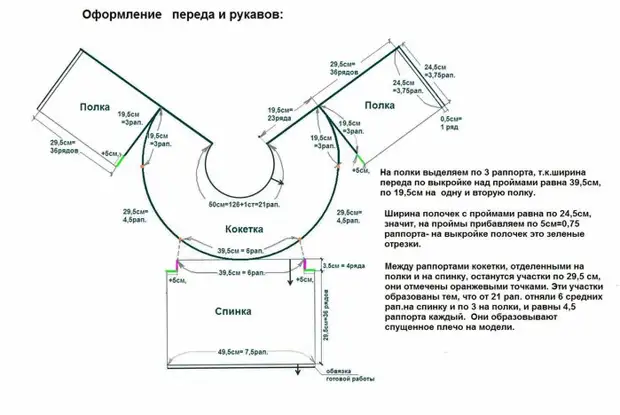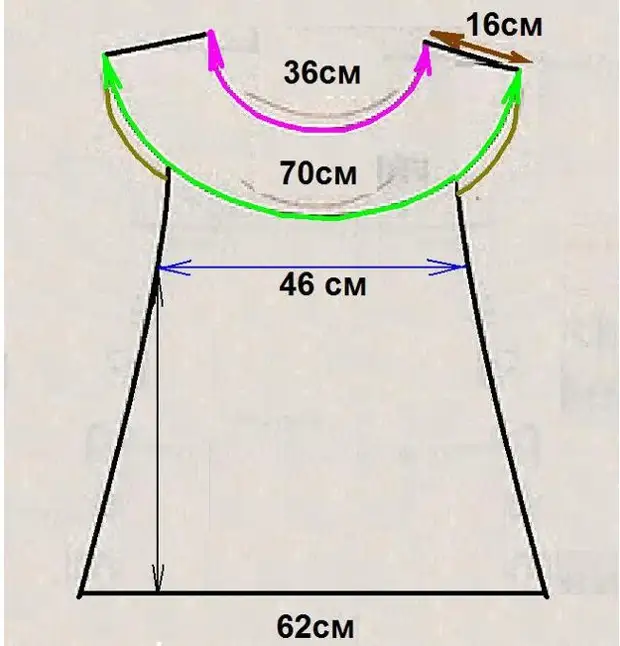
Calculations when crocheted crochet knitting.
When performing any product with any form of coquetka, we need to build a pattern in a natural (or scaled) value, then apply the line of your coquetka.
Then we need to make some measurements on the associated pattern of the selected pattern and on the existing pattern.
1. You need to know the amount of coquette from above - in cm. And in the number of columns - a pink line.
2. Know the amount of coquette according to its lower, wide edge, - in cm and in the number of columns - green line.
3. Know the length of the coquette of the selected model in the CM and in the ripports of the pregnant sample - the brown line.
It depends on it:a) how many columns need to be increased (expanded) each rapport of the coquette pattern, in which rows of rapport is more convenient to perform the necessary additions;
b) the coquette can be of any length from top to bottom, and depending on which pattern it is built, depends:
- Will we finish with a narrow (short) coquette, all the details of the regulated burns in the direction of the prummam;
- Will we work out the premises on the armors themselves;
- whether shortened rows are needed at the transition to the main canvase, etc.
Example 1. Round coquette with a fastener in front, sleeveless (shredded shoulder)
Consider on a concrete example, pattern and on a specific model.
Perform a model with a shredded shoulder formed by a round coquette long, based on a standard pattern with a black sleeve for 48r-ra. Select the pattern and sample. We produce all calculations by relying on the pattern and stacked sample:
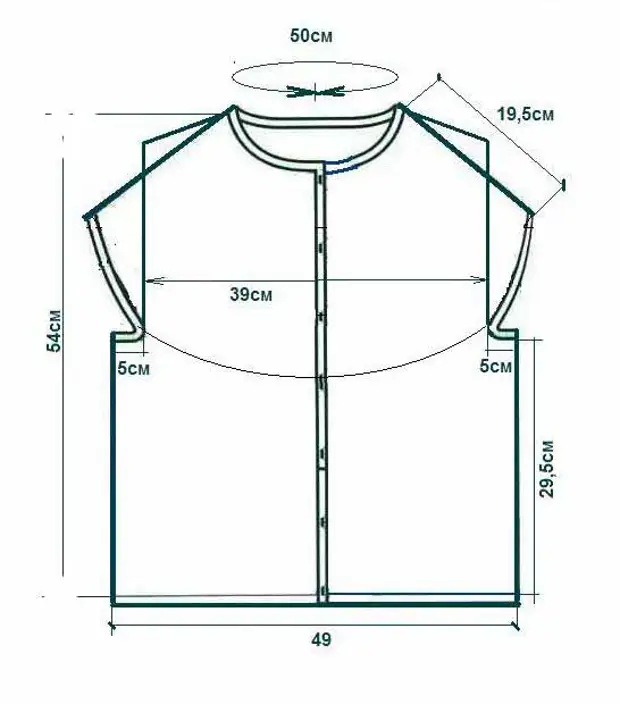
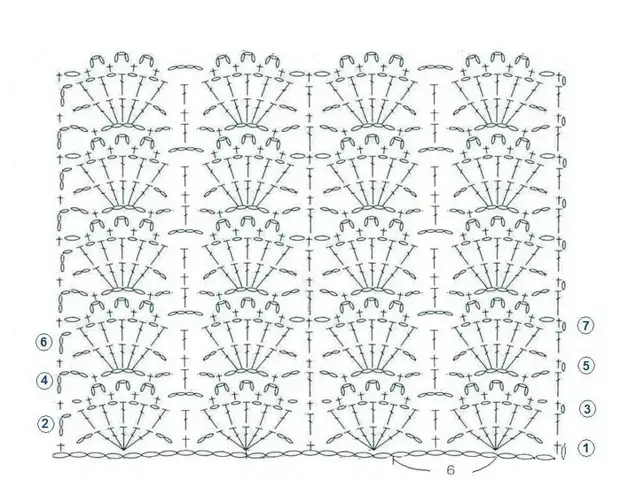
- measurement cm ribbon on the pattern gives 136-137cm, which gives us (136x127p): 50cm = 345.4P. We gained 21 rapport, which means that the calculated number of loops, we must lead to multiplicity at 21:
345.4: 21 = 16,5Petel = 17Petel in one rapport on the bottom of the coquette.
Carefully consider our sample. With a rapport height in 4 rows and the length of the coquette 19.5 cm, we need to tie 23 rows, making uniform gain in the schema line.
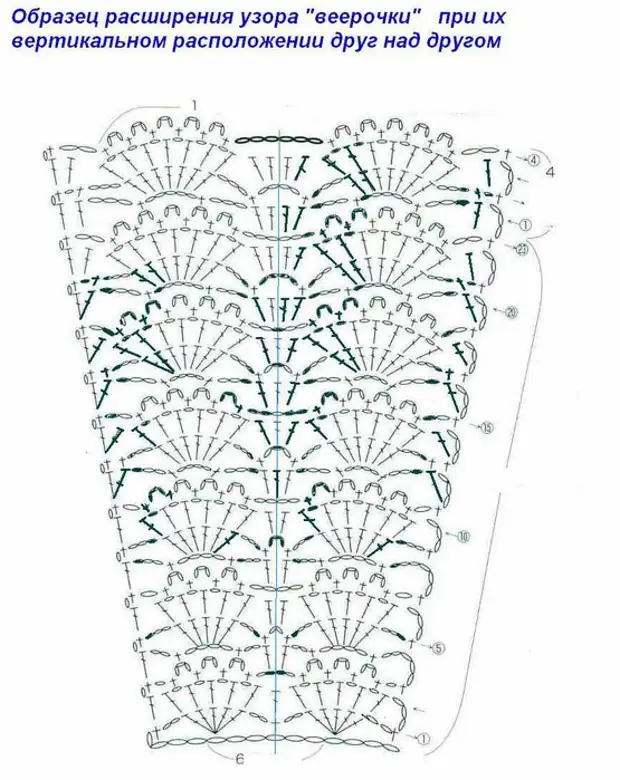
Tied the coquetka, proceed to the distribution of the coquette into two shelves and the back. We have 21 rapport. If we divide traditionally on 3 parts - one on the front, the second on the back and the third, on both sleeves, we will get 7 frames for 1 part, which corresponds to 7p.x17p. = 119Petel, and the width of the backrest with us without a previous time - 39cm What is equal to 6 rapports of the extended scheme.
17px6p = 102p. Check again: (39cm x127st.): 50cm = 99st.
Therefore, on the back to separate 6 rapports, on the shelves - 3 rapports, on the sleeves - by 4.5RPPT.
First, we need to lengthen the back - to plunge the full rapport of the pattern in the height, to obtain a "sprout" - that is, ... so that the model does not "drive" up before "the model did not go to the neck.
On the middle 6 rapports of the coquetki, which corresponds to the back, insert 4 rows of the pattern. Now knit now with rapports obtained while expanding the sequette pattern
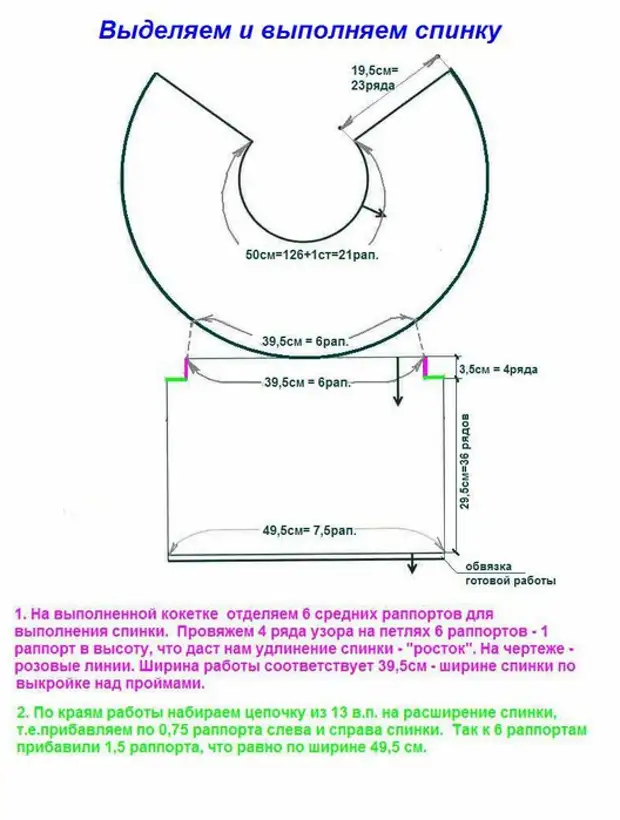
By pattern, the width of the back with the runts is 49.5 cm or 7.5PPT. We add to the back on its bokes of the armor. To do this, sticking the 4th row of the backrest, we take a chain from V.P. 5 cm long, we make a lifting loop and perform 0.75 rapport pattern on a tied chain, 6 ripports pattern of the back, on the other side, the backrest is similar to the width of the 2nd armhole, also include them in the pattern and knit the entire back of the back to 7.5 rapports (0.75 + 6 + 0.75 = 7.5 RAP).
Then proceed to the execution of one, then the second shelf:
